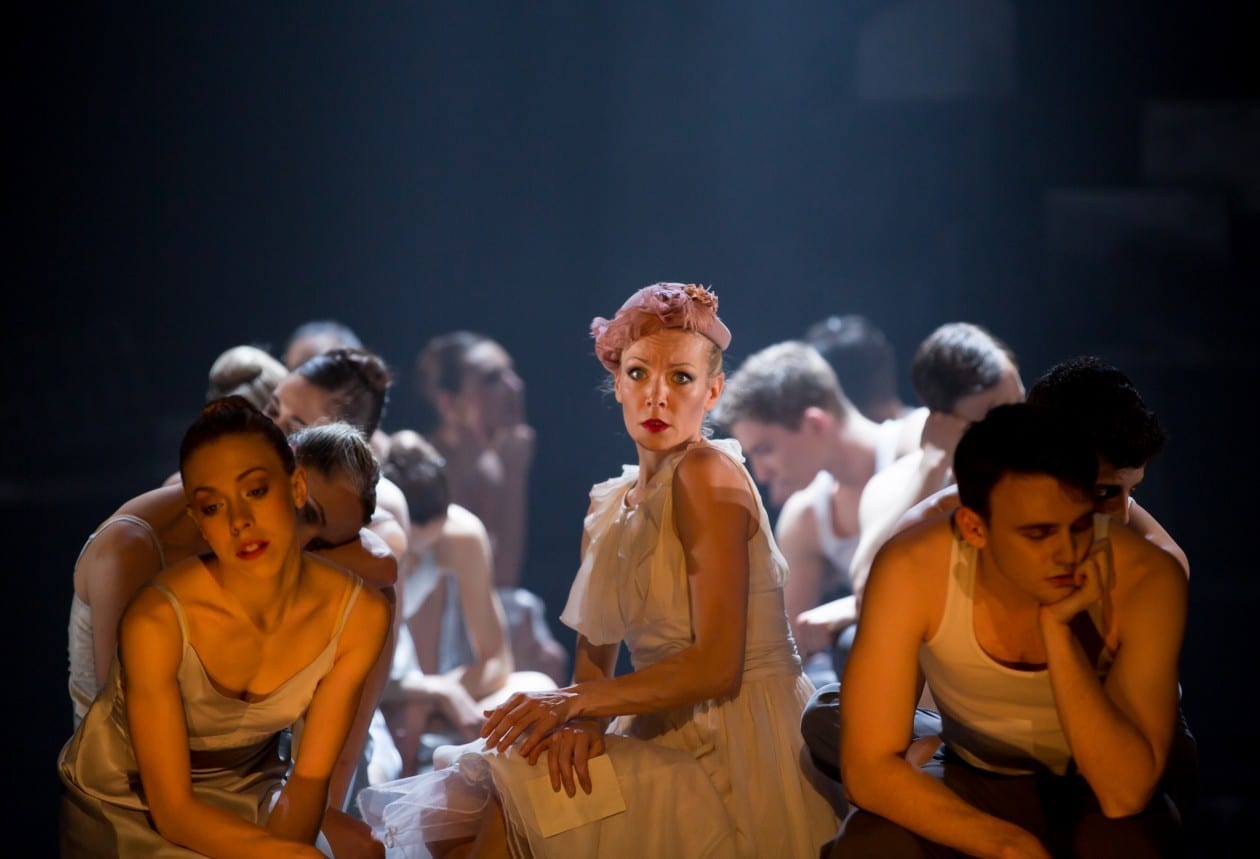It is no easy to feat to translate Tennessee William’s evocative prose into dance, and choreographer Annabelle Lopez Ochoa deserves the highest praise for doing so with such grace and passion.
Rather than focusing on the unravelling of Blanche’s deception, the ballet places events in chronological order, focusing instead on the unravelling of Blanche herself. And, as it transpires, dance is the perfect medium with which to explore her tortured psyche. This focus requires enormous depth from Eve Mutso, and she carries off the part of Blanche with distinction. The ballet begins with her dancing under a solitary bare lightbulb, reaching hopelessly for it, hampered by her own limbs and her delicate, trembling hands. The motif of a lightbulb is one that recurs throughout the ballet, inspired by Streetcar’s original title: The Moth. Here it is transformed into a symbol of dreams that are never to be. Later on in the ballet, as Stella chooses Stanley one last time, the chorus emphasises these trembling movements, fluttering on pointe, reaching hands echoing Blanche’s own.
The story of Blanche’s early life is, perhaps, a little stretched out, although the dancing is indeniably beautiful. As Alan, Blanche’s husband-to-be (Victor Zarallo) enters she initially copies his movements, and then she finds her feet and they dance in tandem together, joyful. These movements are later repeated as Alan flirts and dances with his lover (Thomas Edwards). The wedding music becomes muted and secretive, and the dance becomes something wilder, more conflicted. Although Blanche’s discovery of their love is a little drawn out, the climactic point is fraught with tension, the music stopping and the gunshot echoing in the silence. The chorus often act as a crowd, facing Blanche in direct opposition, and hear they spin across the stage as they move blocks, sickeningly dizzying as Alan falls, dead, into her arms.
These blocks make up all of the set-pieces within the ballet – initially forming her home, Belle Reve, which collapses in a tumbling pile as the last of Blanche’s relatives fall dead around her, camera flash like a gunshot. Composer Peter Salem has used a variety of music styles – from the sultry jazz of the time to more modern, thumping drums. There are sensuous snares as Blanche dances with men in the hotel, a genuinely erotically charged scene, and an industrial whir as Stanley, Blanche’s brother-in-law, (Erik Cavallari) enters for the first time. Comparing Cavallari to Brando is unfair, but inevitable, and he does lack some of that raw animalism, and there is not nearly enough anguish in his voice as he screams Stella’s name. However, in the later brutal rape scene he does fully demonstrate the violence of the character.
The background dancing and acting are good throughout, and the chorus are at their best when they are at their most judgemental, dragging Blanche and her young lover (Andrew Peasgood) apart, her suitcase whirling through their stamping bodies. It is silent and still as she departs. Silence is used to great effect throughout this production, and although there are moments when it could have been stretched out for longer, the dancers’ need for music makes this brevity understandable.
Alan and Blanche’s young lovers movements echo each other, Alan dancing in his blood-stained shirt, catching Blanche’s eye, making it desperately clear who she is haunted by. Her nightmares are all embodied onstage – her alcoholism personified by the cajoling, rampant figures of two men, a physical presence trapping her. The music becomes high-pitched and discordant as Blanche sees the shooting scene once more before her, the scene shrouded in nauseating red-purple light.
Mitch (Lewis Landini) is an initial relief in the midst of Blanche’s torment, adding rare touches of humour with his inappropriately cheerful dancing and moments of physical comedy. Of course, this does not last long, and Stella’s (Blanche’s sister, played by Sophie Martin) beautiful lazy morning dancing in the face of Blanche’s frantic movements signifies the moment the devision between them becomes clear. Blanche is, after this point, irrevocably broken, fragile in the face of persistent, unrelenting drums.
Her fantasises provide the landscape for dramatic showpieces that demonstrate the creativity of set designer Niki Turner, and, ultimately, that render the starkness of reality all the more powerful. Finally, even the set Blanche clings to is taken, and she is left alone, lying on the floor, with only a light bulb suspended above her. In the midst of this complete isolation, is it any wonder that she reaches for the light?
The final scene of the ballet is viscerally haunting, a goose-bump inducing whirl through Blanche’s mind – and, once again, a stark lightbulb that cannot help but die.

